Egret Mini II review
If there was ever going to be a Mount Rushmore of arcade gaming, there is a good chance that Taito would be one of the prime candidates to be etched into a rockface. Alongside the likes of Namco, Capcom, Atari and Sega, they were a crucial part of the golden era of the coin op. Take Space Invaders as the most obvious reason why this is the case. It transcended gaming, and is something that even now, someone with only the tiniest flicker of interest in videogames would likely recognise.
From the 1970s through to the late 1990s, Taito released a bonkers amount of classic titles, many of which are regarded as all-time greats – more of which later. In 1996 they also released a piece of coin operated hardware that has stood the test of time and remains a regular fixture in Japanese arcade parlours to this day. The Egret II is an iconic two player candy cabinet, that was JAMMA ready and built with the ability to sit down and play horizontal or vertical ratio titles. Along with the SEGA Astro/Blast/Net City range, the Egret is the most likely machine you would find on a trip to Akihabara.
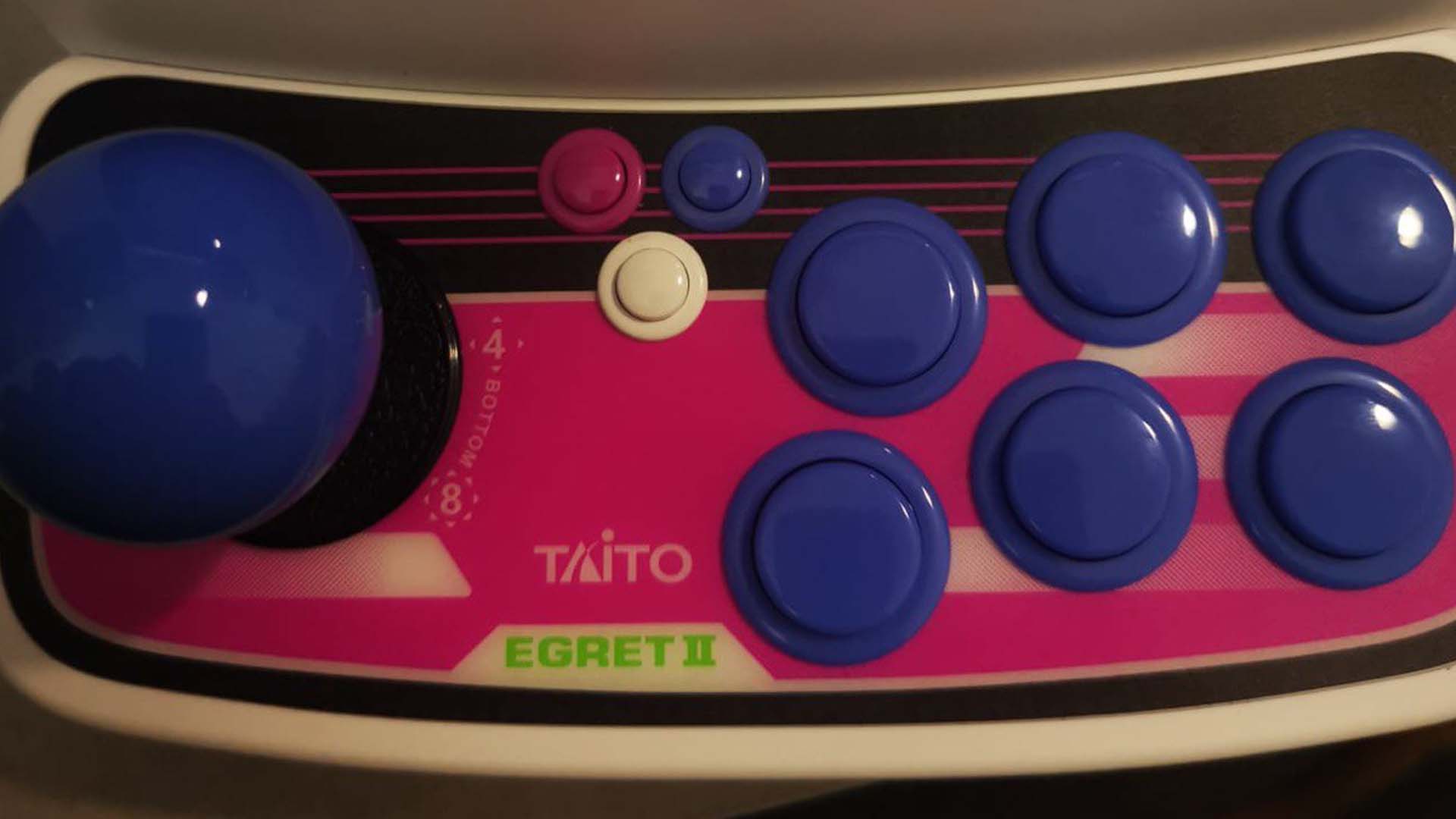
Now, just like the super deformed recent Astro City and Neo Geo Mini, home gamers get to experience a scaled down, single player version of a legendary arcade cab. Having spent some time getting to grips with its myriad charms, it is fair to say that this is the absolute best of the recent trend for miniature consoles, arcade or otherwise.
Just the packaging alone is a thing of beauty that will trigger off all manner of emotions for anyone, like me, who has an affinity for Japanese arcade gaming culture. Everything is in Japanese, as it should be, and looks like something supremely cool and prohibitively expensive I would have coveted from Play Asia back at the peak of my early 2000s retro addiction phase. Once you get the unit out of the box, it feels pleasingly heavy, and is a good deal larger than the Sega and SNK equivalents.
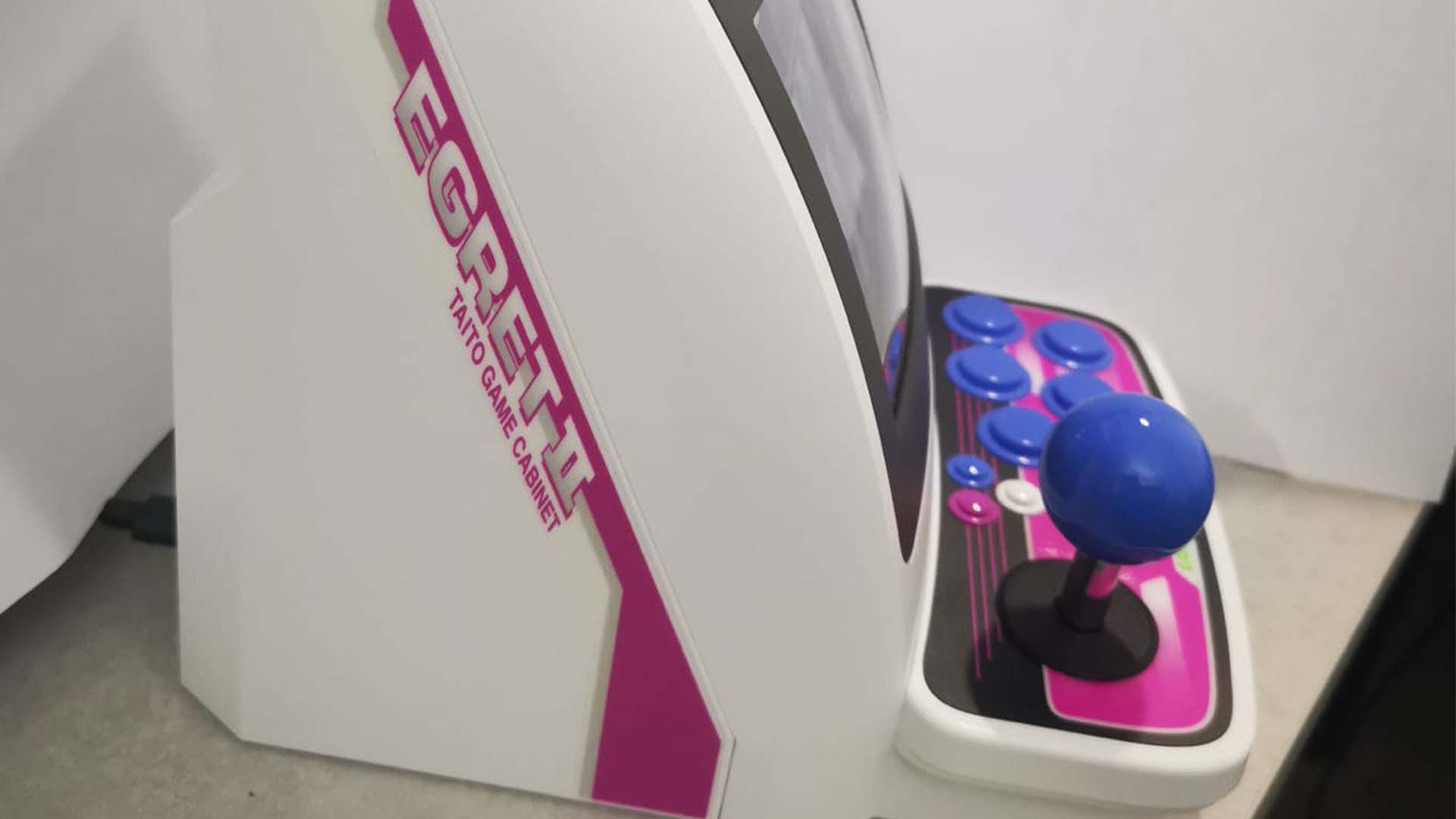
It looks absolutely superb – it is a guaranteed head turner that even non-gamers will want to have a look at and a tinker with. The bezel lights up, and there is even a clear holder to place game title cards that is lit from beneath. I immediately went for a try of the stick and buttons. I am unsure as to whether they are Sanwa, Seimitsu or some kind of equivalent – but they feel fantastic. There are main buttons, with three smaller ones above that take care of adding credits, start, and returning to the main menu. Underneath the ball top is a gate control that allows you to select between 4 and 8 way gate for the stick – a very clever inclusion when you consider the games included run the gamut of different styles from various era.
The ingenuity does not end there though. The best feature of this machine is the way it emulates the original arcade hardware’s convenient ability to rotate its CRT monitor to play vertical games in their preferred TATE format. Here, you simply push the screen in and it clicks out, you twist it, and click it back in place satisfyingly. The display then flips automatically the same way your phone recognises auto-rotate.
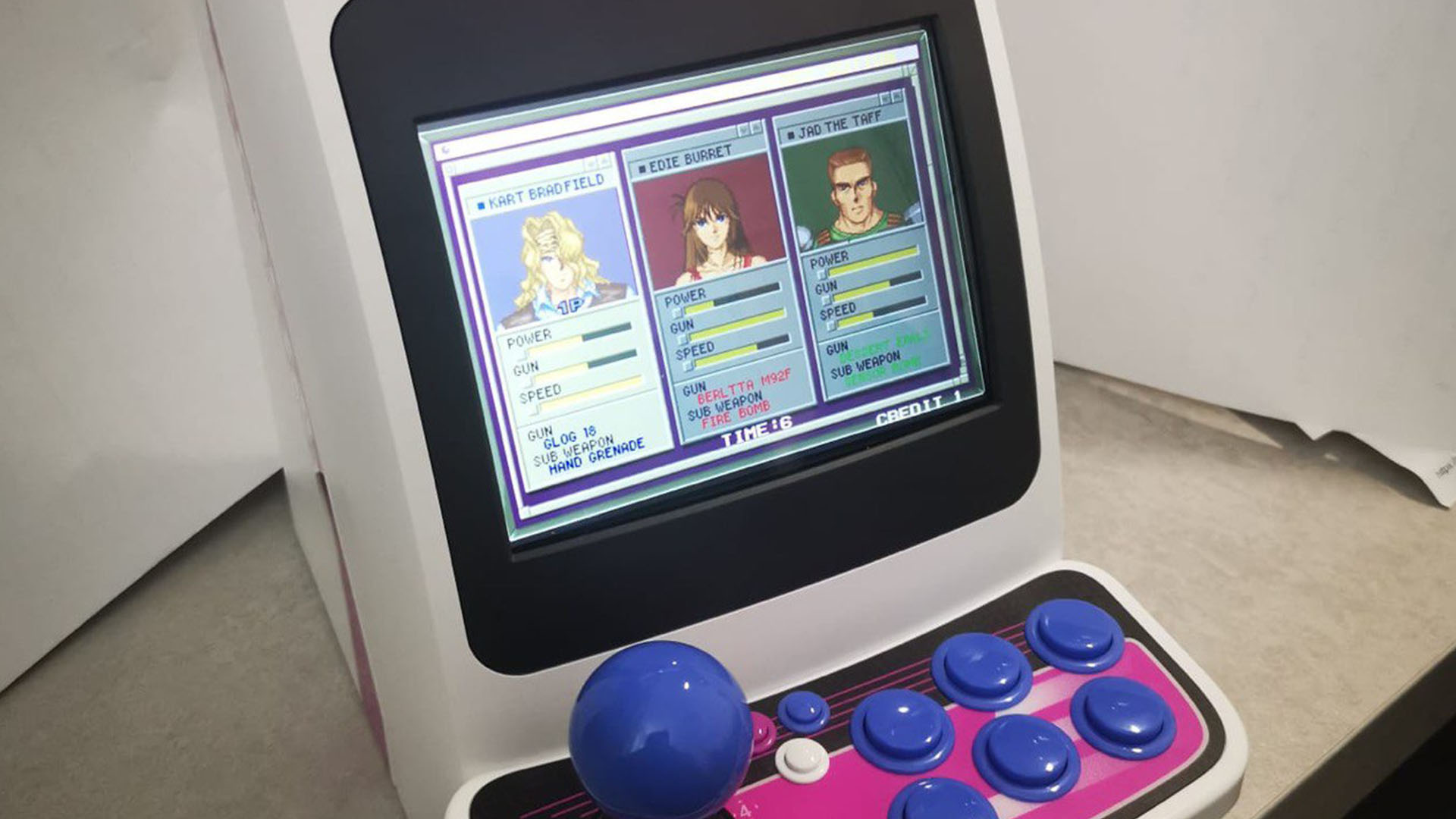
And what a screen! The rotating five-inch wonder is bright, clear and a real showstopper. Booting it up you are presented with clear and concise menu screens. The 40 packed in games all have their own dipswitch style settings to play with, and you can save your progress the same as with any other emulator. There are brightness and sound options, and a choice of backgrounds if you decide you wish to use the HDMI functionality to connect the unit to a television.
The game selection itself is blessed with enough excellent choices to satisfy most Taito fans. Whilst not as comprehensive as the Holy Grail that is the quartet of NTSC-J Taito Memories discs, everything here is emulated perfectly – something that cannot be said with the aforementioned SEGA and SNK efforts. There are obvious highlights. Bubble Bobble, Rainbow Islands Extra, Bubble Symphony and Bubble Memories complete the Bub and Bob platform saga, with the latter pair available in Western homes in arcade perfect form for the first time. Tatsujin, RayForce, Darius Gaiden, Kyukyoku Tiger and Metal Black are all premium shoot ‘em ups that would set you back a fortune to purchase separately for home consoles.
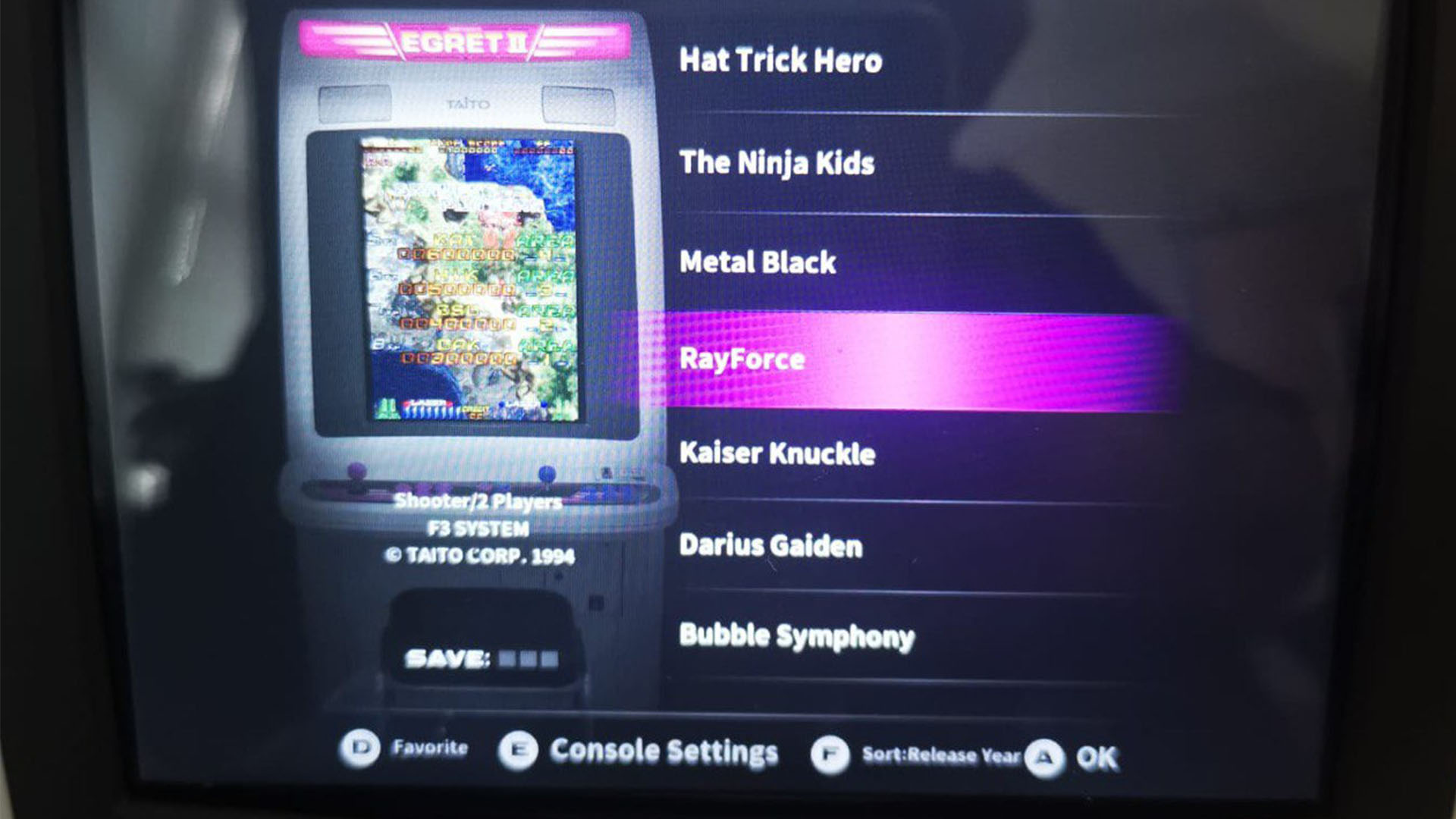
An unexpectedly ace inclusion is Dan-Ku-Ga – a previously unreleased Japanese revised semi-sequel to Kaiser Knuckle. On the surface a Street Fighter clone in a similar vein to World Heroes, it quickly becomes apparent that there are some very imaginative characters and movesets, and I enjoyed it very much indeed. The finest game on the Egret II Mini, however, also happens to be my favourite arcade title of all time. Elevator Action Returns is a thinking man’s run and gun affair, that uses the up ‘n’ down mechanics of the 1983 original, and adds a plethora of weapons, three diverse characters, and an air of malevolence and terroristic menace that is almost unmatched in coin op history.
If I was going to level any criticism at the unit itself, then it would be that the size of the thing could be more difficult for players with larger hands to get along with, lest they obscure part of the screen when gripping the stick. The sound output features accurate and excellent representations of the arcade sonics, but is obviously underpowered and a bit tinny. You do have a headphone socket though – so the option is there to connect speakers or ‘phones. Connecting to the telly is not particularly practical either if you are holding the entire unit as your only controller, unless you have a flat surface to place it on. It would have also been nice to have the option to power the thing with batteries to make it fully portable – imagine how much of a don you would look sat on a train and pulling out a fucking arcade machine.
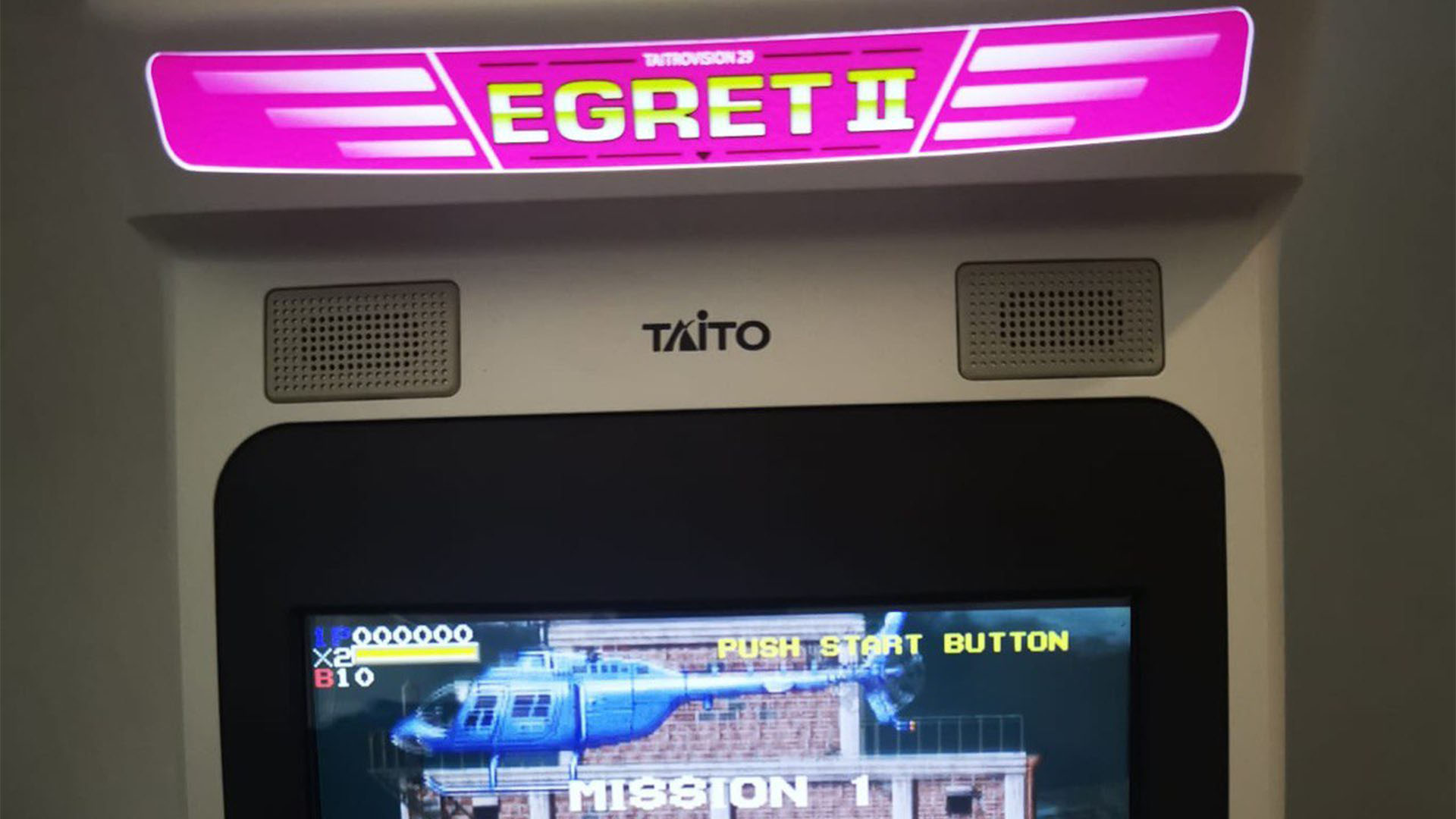
There are add-ons available that would undoubtedly enhance and unlock more of the potential of the Egret II Mini. I haven’t tried them, but the available handheld controllers and mini arcade sticks follow the aesthetic Egret motif and look like fantastic USB options, if a tad on the expensive side when you consider you will be paying the thick end of £200 for the main unit. Sadly, none of my USB options – such as 8Bitdo – would work with the Egret – so it is official Taito or nowt.
Also on the market is an additional controller featuring a trackball and paddle which comes bundled with an SD card containing ten further games that take advantage of these options, including the superb Arkanoid series, Puchi Carat and Sylvalion. Weighing in at around £100, this may be a bridge too far cost wise for some, but doesn’t stop me hovering over the purchase option with a gradually decreasing resistance. The SD slot on the side of the unit tells me that there may even be additional game pack on the horizon. Off the top of my head I could offer the Ninja Warriors games, Arabian Magic, and RayStorm, as worthy inclusions.
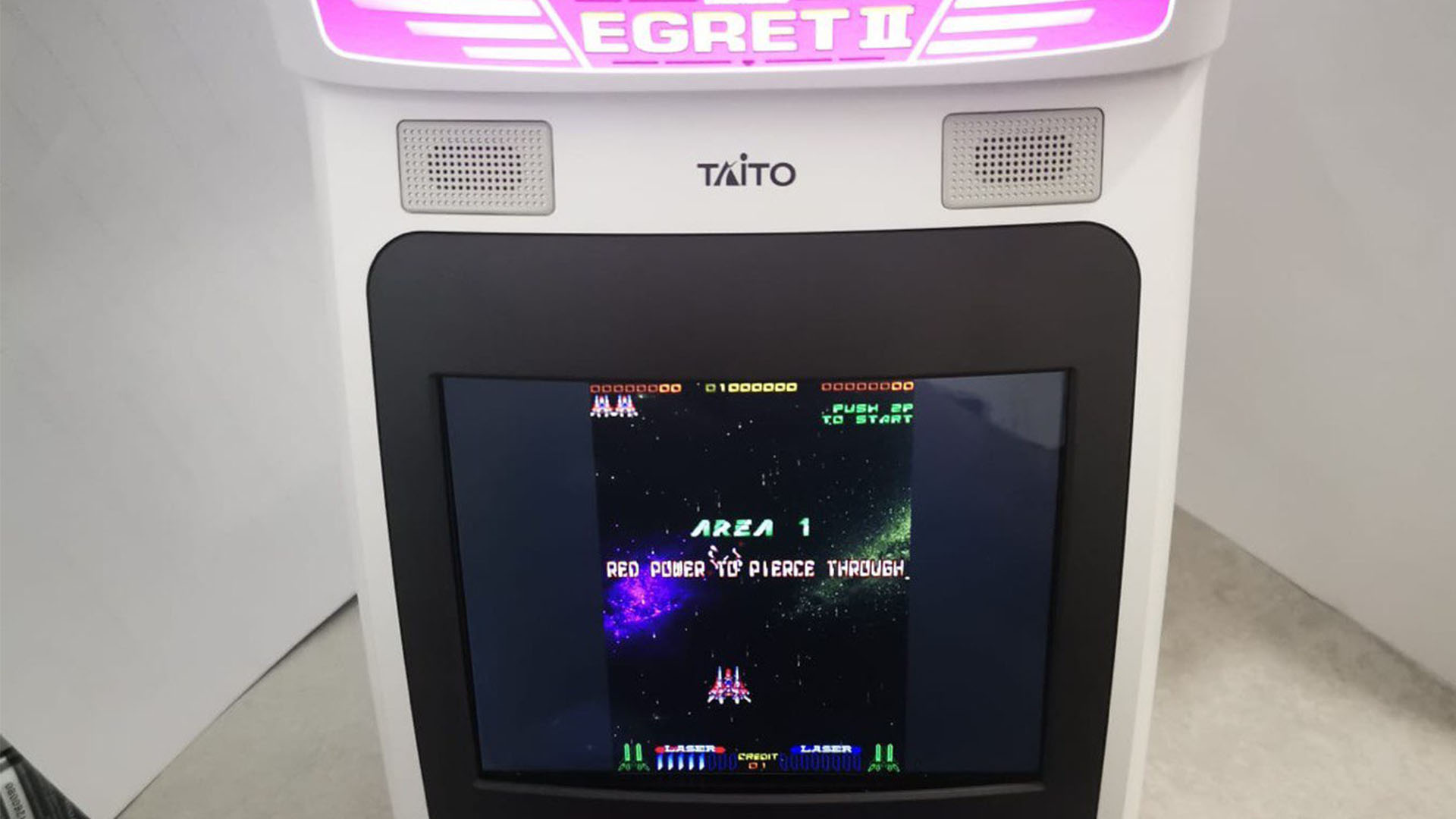
But I am being greedy. There is more than enough in the bare bones package to satisfy your arcade cravings for many hours. The Egret Mini II is a seriously impressive piece of retro flavoured kit, that stands alone as the finest miniaturised arcade cabinet on the market, with superb build quality, performance and playability. The arcade scene is pretty much dead in the West, and it is going to cost an arm and a leg – not to mention the floorspace – to get the real thing in 2022. This is an excellent way of recreating the unparalleled feel of the arcade in your home, at your desk, or on your telly.
The Egret Mini II is available from Strictly Limited Games.




